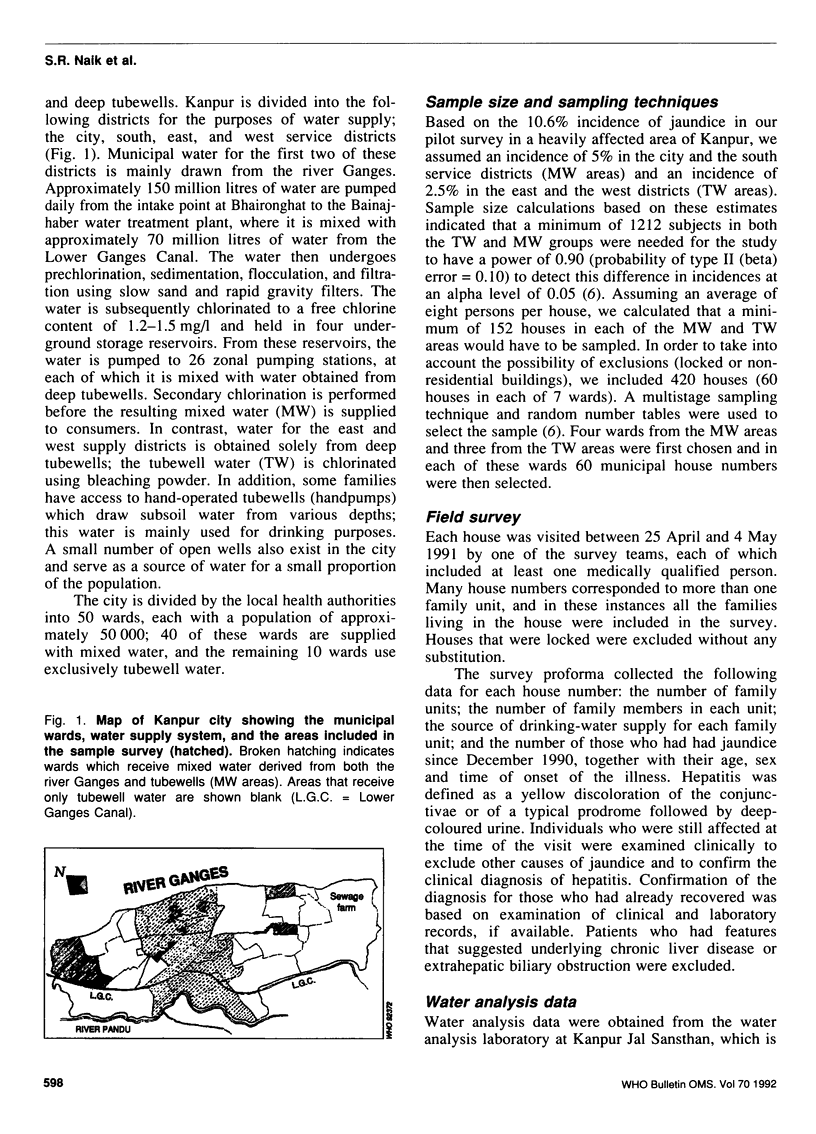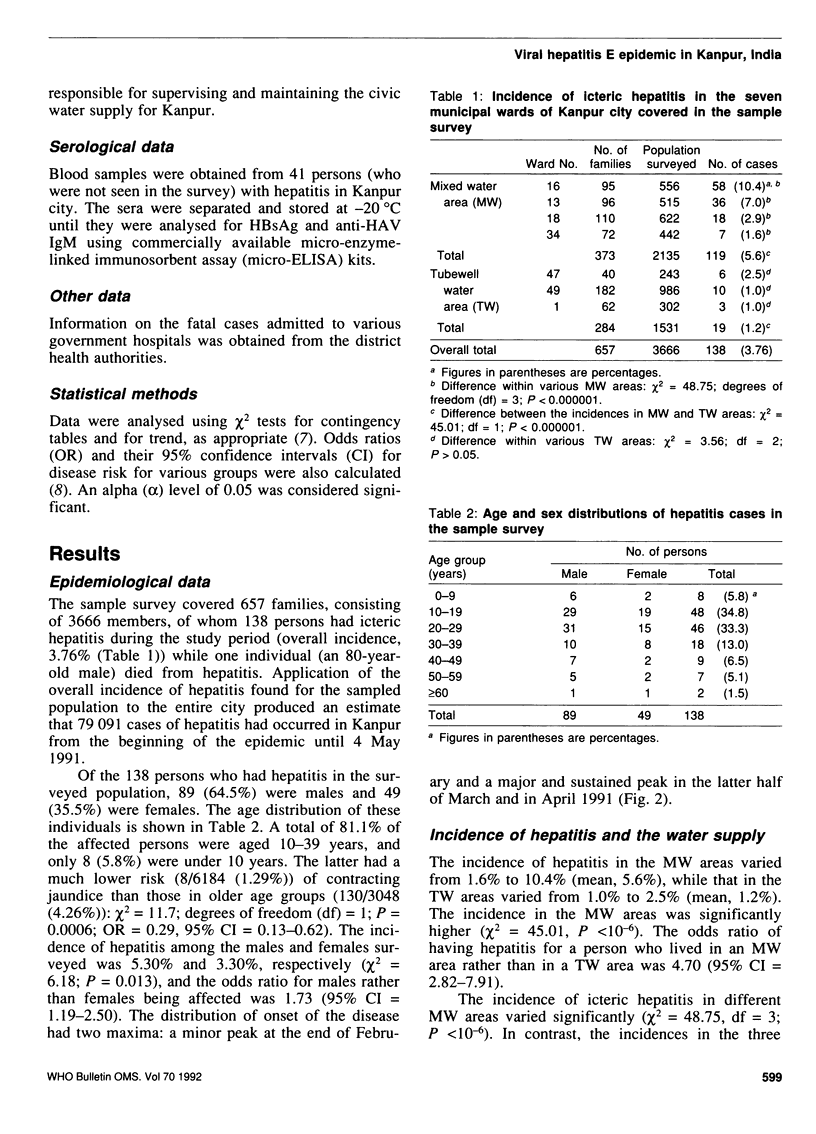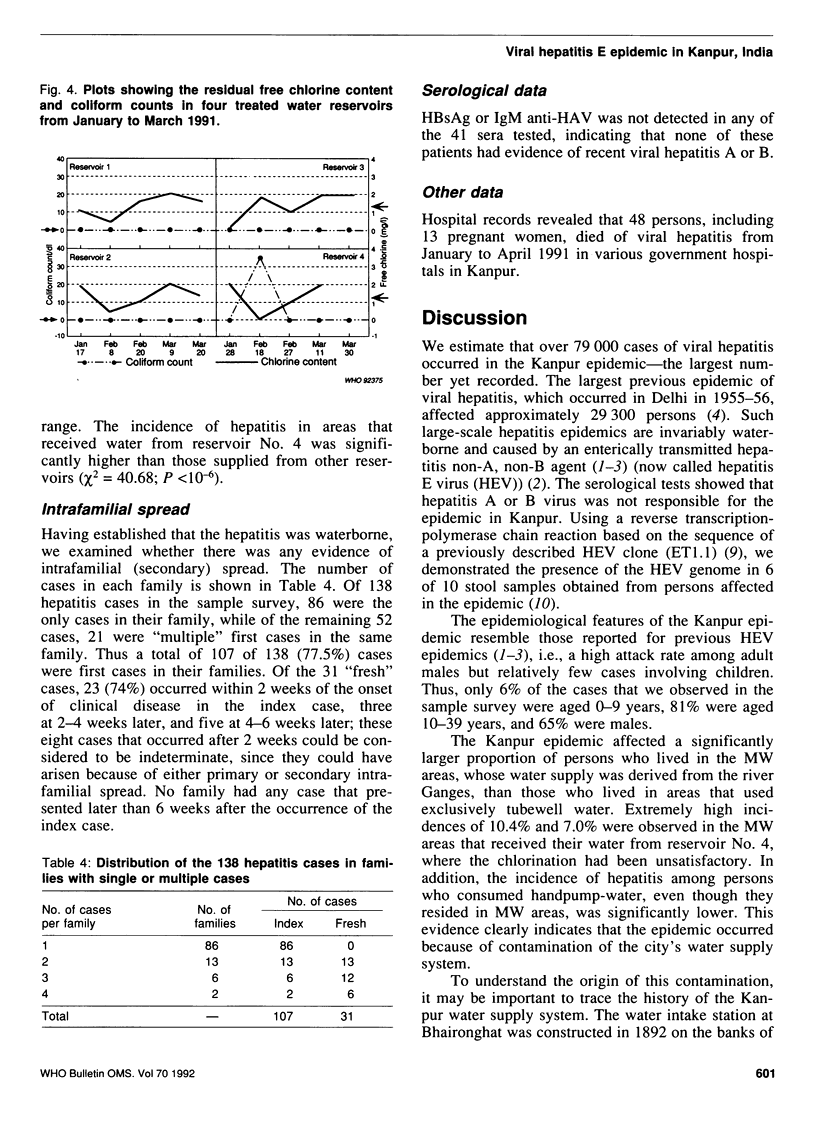Abstract
In 1991 the largest epidemic of viral hepatitis E yet reported occurred in Kanpur (population, 2.1 million), India. The incidence of icteric hepatitis from December 1990 to April 1991 among the inhabitants of 420 randomly sampled houses in seven of the city's 50 wards was 3.76% (138 out of 3666 individuals), i.e., an estimated 79,091 persons in the city as a whole were affected. The attack rate was higher for males than females (5.3% versus 3.3%; P = 0.013) and for adults than children aged < 10 years (4.26% versus 1.29%; P = 0.0006). The incidence of hepatitis was higher in those city wards that were supplied with drinking-water consisting of a mixture of river Ganges and tubewell water than in those wards supplied only with tubewell water (5.6% versus 1.2%; P = 10(-6)). In the mixed-water areas, the incidence decreased as the drinking-water source changed from only tap to both tap and handpump, to only handpump (7.8%, 6.8%, and 4.3% respectively; P = 0.023). None of the sera collected from 41 hepatitis patients during the epidemic showed evidence of hepatitis virus A or B. There were two peaks in the epidemic (in February and April 1991). The first peak was probably caused by faecal contamination of river water, indicated by water analysis data, and the second, by inadequate chlorination of water in a reservoir. There was no evidence of secondary intrafamilial spread.
Full text
PDF







Selected References
These references are in PubMed. This may not be the complete list of references from this article.
- Hurst C. J. Presence of enteric viruses in freshwater and their removal by the conventional drinking water treatment process. Bull World Health Organ. 1991;69(1):113–119. [PMC free article] [PubMed] [Google Scholar]
- Khuroo M. S. Hepatitis E: the enterically transmitted non-A, non-B hepatitis. Indian J Gastroenterol. 1991 Jul;10(3):96–100. [PubMed] [Google Scholar]
- Khuroo M. S. Study of an epidemic of non-A, non-B hepatitis. Possibility of another human hepatitis virus distinct from post-transfusion non-A, non-B type. Am J Med. 1980 Jun;68(6):818–824. doi: 10.1016/0002-9343(80)90200-4. [DOI] [PubMed] [Google Scholar]
- Ray R., Aggarwal R., Salunke P. N., Mehrotra N. N., Talwar G. P., Naik S. R. Hepatitis E virus genome in stools of hepatitis patients during large epidemic in north India. Lancet. 1991 Sep 28;338(8770):783–784. doi: 10.1016/0140-6736(91)90667-e. [DOI] [PubMed] [Google Scholar]
- Reyes G. R., Purdy M. A., Kim J. P., Luk K. C., Young L. M., Fry K. E., Bradley D. W. Isolation of a cDNA from the virus responsible for enterically transmitted non-A, non-B hepatitis. Science. 1990 Mar 16;247(4948):1335–1339. doi: 10.1126/science.2107574. [DOI] [PubMed] [Google Scholar]


